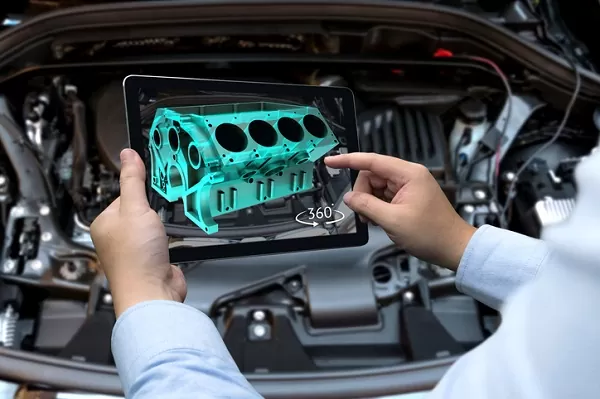A car’s suspension system is made up of several parts, including the springs, shock absorbers, and linkages. The springs support the weight of the car and help to absorb shocks from bumps in the road. The shock absorbers control the amount of rebound when the springs expand and contract. The linkages connect the suspension components to the wheels and allow them to move up and down.
Cars are designed with suspension systems that allow the car to travel over bumps and uneven surfaces without bottoming out. When a car’s suspension system reaches its maximum compression, it will bottom out. This can cause damage to the car and its occupants. In this blog post, we will discuss what causes cars to bottom out and how you can prevent it from happening.
What Exactly Does Bottoming out Mean? What Happens?
When you bottom out in a car, it means that your suspension system has reached its lowest point and is no longer able to support the weight of the vehicle. This can happen for a number of reasons, but usually, it’s because the shocks or struts are worn out and need to be replaced. Bottom out damage can also occur if you hit a large pothole or speed bump too fast.
If you do bottom out, there’s a good chance that you’ve damaged something in your car. The most common type of damage is to the suspension components themselves, but you may also see damage to the underside of the car where it scraped along the ground. In severe cases, bottom out can even cause tire punctures.
What Are The Most Common Reasons For Bottoming Out Suspension?
One of the most common reasons that cause a car to bottom out is having suspension that is too soft. When the suspension is too soft, it causes the car to bounce up and down on the road which can eventually lead to the car bottoming out.
Another common reason for a car to bottom out is if there is something wrong with the shocks or struts. If the shocks or struts are not working properly, they will not be able to absorb any of the impact from bumps in the road which can also lead to a car bottoming out.
Lastly, if a car has been lowered too much, it can also cause it to bottom out on the road since there is less clearance between the ground and underside of the vehicle.
Any of these reasons can cause a car to bottom out on the road, so it is important to be aware of them and to have your suspension checked if you are experiencing any problems.
How To Fix A Car That Is Bottoming Out?
First, check your shocks and struts. These are the components of the suspension that actually do the work of absorbing impact, so if they’re worn out, it’s no wonder your car is bottoming out. You can usually tell if they’re worn out by looking at them – if they’re leaking fluid or look bent or damaged in any way, they need to be replaced.
Another possible cause of bottoming out is worn-out suspension bushings. These are the rubber components that cushion the metal parts of the suspension, and over time, they can wear out and degrade. This will usually make your car feel less stable and can cause all sorts of handling problems, not just bottoming out. If you suspect this is the problem, take your car to a mechanic or dealership to have it checked out.
Finally, if your car is still bottoming out after you’ve checked all of these things, it’s possible that the springs are too weak. This is a more serious problem that will likely require professional help to fix, but it’s worth checking into if everything else has failed.
Tips For Lowered Cars – How To Prevent Your Car From Bottoming Out
One of the main concerns for lowered car owners is bottoming out. This is due to the suspension having much less travel than a standard car setup. While lowing a car may increase the aesthetic appeal of a vehicle, it’s not without its risks.
Below are some tips for avoiding bottoming out a suspension in a lowered vehicle.
- – If you must go over a speed bump, do so at an angle. Try to approach the bump at a 45 degree angle if possible. This will help reduce the impact on your suspension.
- – Be aware of potholes. These can be especially dangerous for lowered cars. If you see a pothole ahead, slow down and try to go around it if possible.
- – Don’t Buy Low-Quality Suspension parts. Cheap springs and Coilovers can be low quality and cause issues like bottoming out. If you are going to lower your car, make sure you only invest in top quality parts.
- – Remove unnecessary weight. Do you have any unnecessary items in the trunk? If you do, remove them!It will they increase the chance of bottoming out
How Low Should You Go?
There is no definitive answer to this question as it depends on a number of factors, such as the make and model of the car, the suspension set-up, and personal preference. However, there are some general guidelines that can be followed when lowering a car.
As a general rule of thumb, the ideal height for a lowered car is around two to four inches lower than stock. This will give the car a more aggressive look while still maintaining good handling and ride quality. Of course, you can go lower than this if you want, but it may start to sacrificed comfort and practicality for looks.
If you’re not sure what height to go with, it’s always best to err on the side of caution and go with a slightly higher setting.
Go Home








